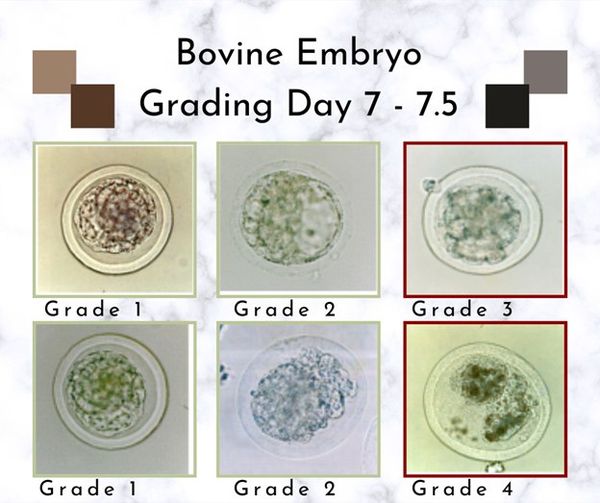
How To Grade Bovine Embryos

Regardless of what embryo type is used (fresh vs. frozen; in-vitro vs. in-vivo) all embryos undergo a screening process to ensure there is a high likelihood the embryo can result in a pregnancy. For this post we will go through the process of embryo grading.
Before transferring an embryo, one must ensure it meets quality parameters. Thus, a scoring system has been developed and is recommended by the International Embryo Transfer Society. Embryo grading is a subjective visual analysis done under a stereomicroscope; the stage of development, shape, and viable cells are determined, and the embryo is assigned a score from 1-4 based on quality.
Grade 1: Excellent or Good
Embryos are symmetrical and spherical in shape with cellular components that are uniform in size, color, and density. At least 85% of the embryonic mass should be intact. Preferred for embryo transfer.
Grade 2: Fair
Embryos have moderate irregularities in shape, size, color, or density of the individual cells. At least 50% of the embryonic mass should be intact. Can be used for embryo transfer.
Grade 3: Poor
Embryos have major irregularities in shape, size, color, or density of individual cells. At least 25% of the embryonic mass should be intact. Not recommended to use for embryo transfer.
Grade 4: Dead
These are embryos that are clearly irregular with less that 25% embryonic mass. These embryos are not viable and should be discarded.
Images adapted from: G.A. Bo & R.J. Mapletoft. Evaluation and classification of bovine embryos. Animal Reproduction. 10(3): 344-8

|
|
|